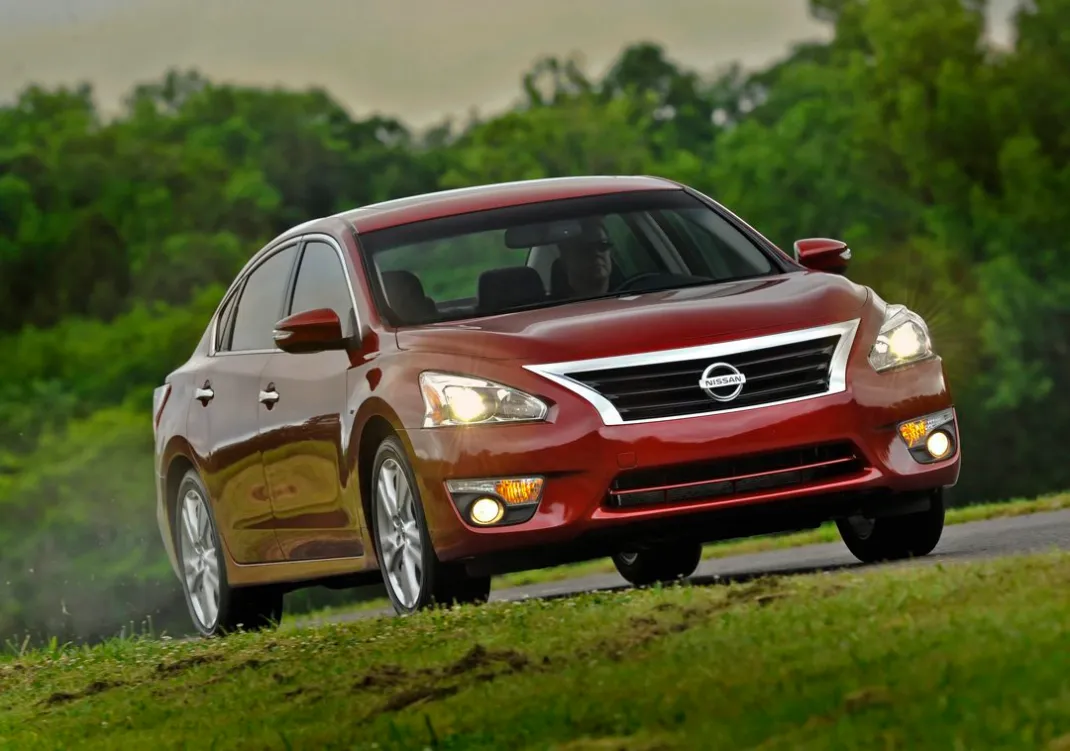A biting wind is churning the snow in your driveway into a swirling mist, the temperature has dropped below zero, and you’re required to head to work an hour earlier than usual in the dark.
It’s the kind of tough day most of us encounter every once in a while. And it’s exactly the kind of day that can be made a little easier if your vehicle is equipped with remote start.
While the ability to start your engine remotely won’t stop the wind, raise the temperature, or bring daylight any sooner, it does allow you to warm up your car before you have to step outside and climb in.
For anyone who’s ever had to sit on leather seats in sub-zero weather, you know just how downright uncomfortable that experience can be.
Cars With Best Remote-Start Systems
Naturally, there’s also the other extreme when it’s too hot. Once again, remote start proves to be a lifesaver, letting you start the car and blast the air conditioning long before you ever open the door on a blistering summer day.With that in mind, here are the best cars with remote start.
2020 Nissan Altima
The latest Nissan Altima should be recognized as a milestone vehicle. At a time when many automakers are scaling back their focus on sedans, Nissan has taken a different approach by heavily investing in its flagship midsize sedan.
The Altima now features an impressive new engine and offers all-wheel drive, making it stand out in its segment.
Additionally, the inclusion of Nissan’s advanced ProPILOT Assist electronic driver-assistance system brings the 2020 Altima closer to the goal of fully autonomous driving. In terms of remote engine start, the Altima is thorough.
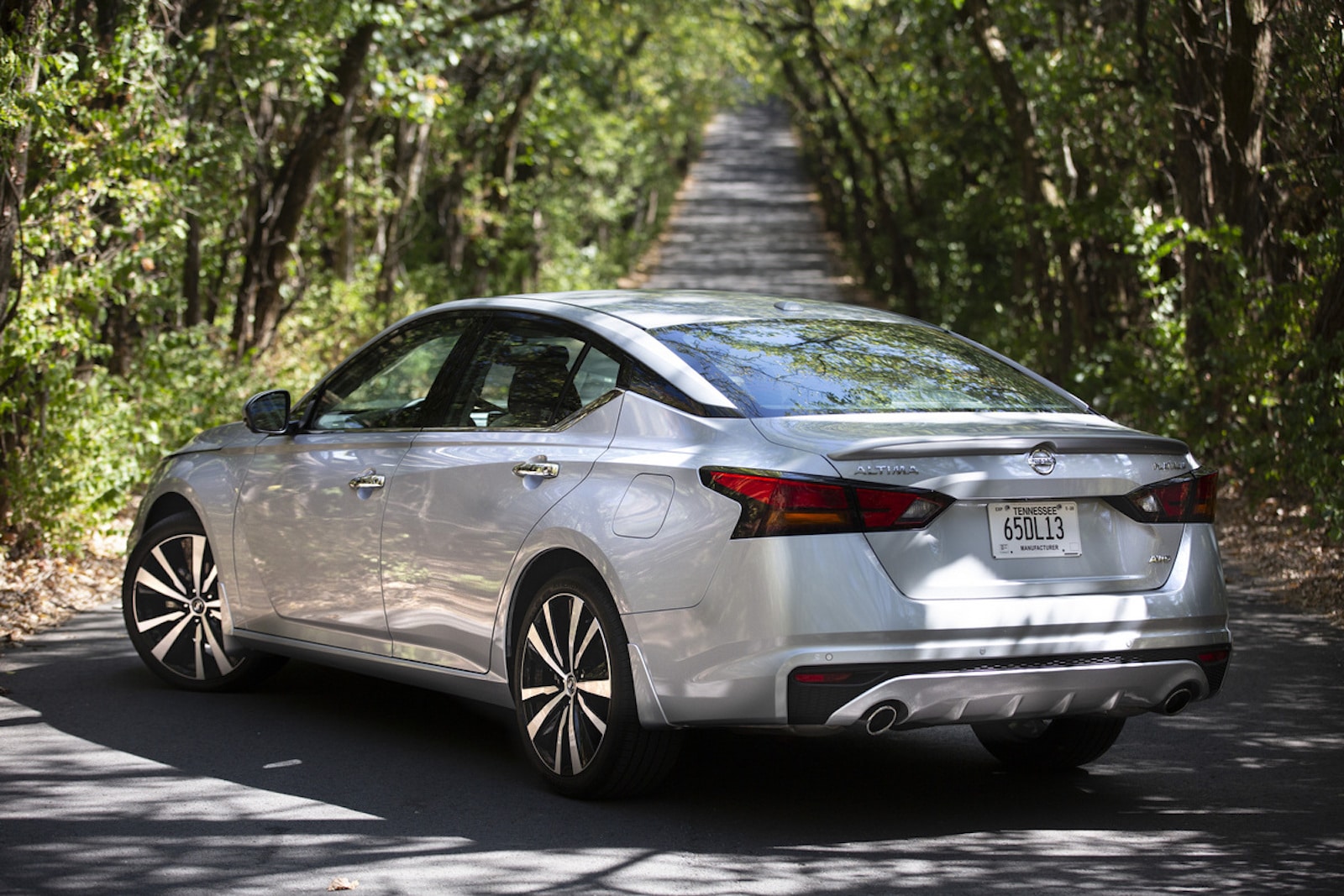
With the standard 2.0-liter engine, remote start is available on the two entry-level trims, while the feature paired with intelligent climate control comes standard on the remaining three trims.
For models equipped with the 2.0-liter variable compression engine, remote start is included on the 2.0 SR trim, and remote start with intelligent climate control is standard on the top-tier 2.0 Platinum trim.
2020 Honda Insight
The 2020 Honda Insight is a purpose-built hybrid sedan designed to feel like anything but a hybrid.
It delivers a more engaging drive and quicker acceleration than top rivals such as the Toyota Prius. While it’s the third vehicle to carry the Insight name, this version has little in common with its forerunners.
Its impressive performance is powered by Honda’s latest two-motor hybrid system, achieving an EPA-estimated 55 mpg in city driving.
For the 2020 model year, remote start is available on the EX and Touring trim levels, though not on the base LX.
Standard features on the Insight include LED lighting all around headlights, daytime running lights, and taillights 16-inch alloy wheels, heated side mirrors, push-button start, and, again, heated side mirrors.
Unlike some hybrids that showcase their eco-conscious purpose with dramatic and unconventional styling, the 2020 Honda Insight adopts a more traditional design that blends seamlessly with standard sedans.
It’s a car that quietly delivers on its promise of fuel efficiency, practical technology, and interior comfort. At first glance, it comes across as a well-rounded and refined choice for families.
However, after spending more time behind the wheel—as we have—some of the subtle shortcomings in polish and refinement become more apparent, elements that might easily go unnoticed during a brief test drive.
In its segment, the 2020 Honda Insight ranks fourth among compact cars. Leading the pack is the Honda Civic, followed by the Mazda 3 and the Volkswagen Golf.
The Insight holds a respectable fourth place, ahead of the Toyota Corolla and Hyundai Ioniq Hybrid. Those interested in a side-by-side comparison of these vehicles can utilize our updated comparison tool for a more detailed breakdown.
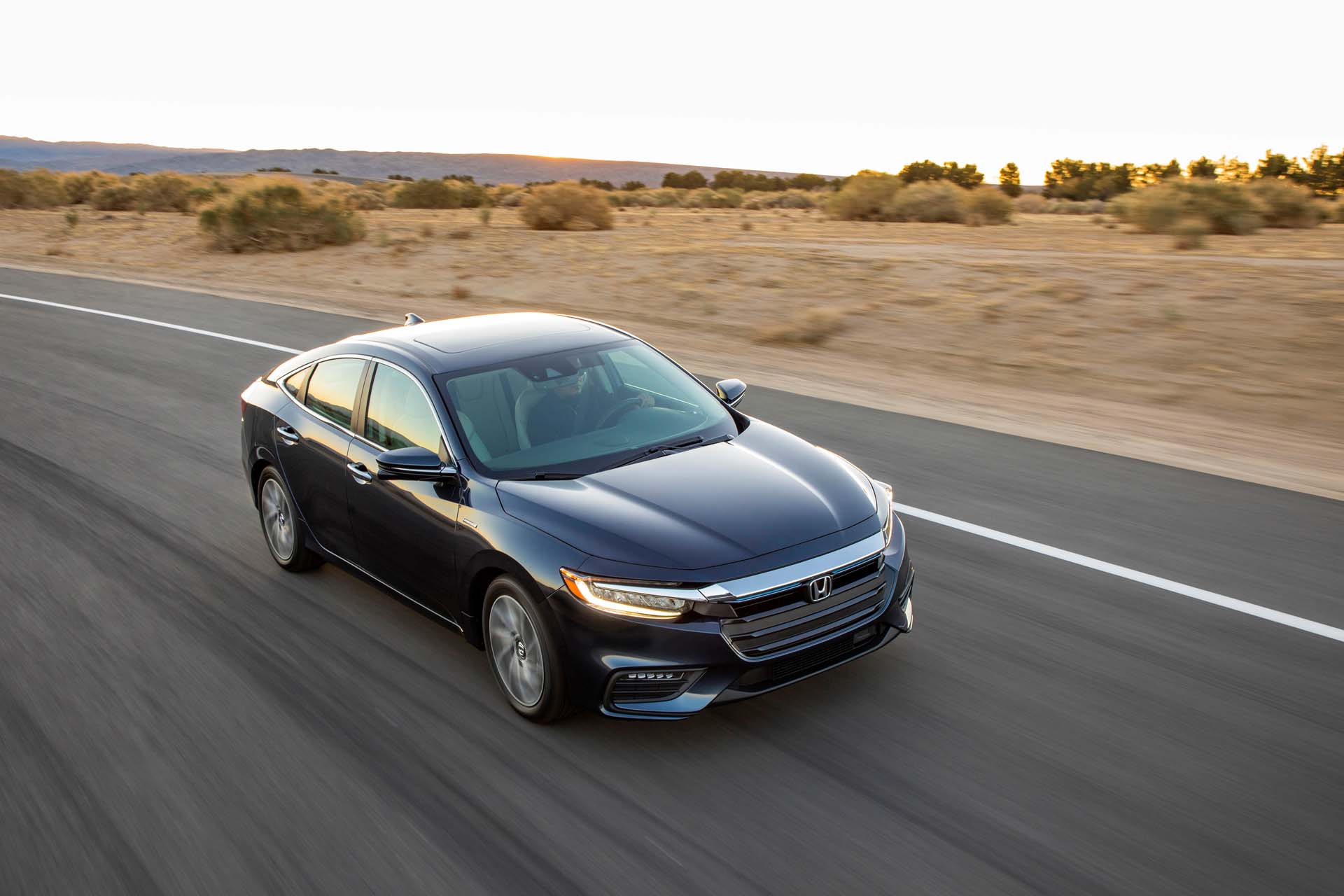
As the 2019 model marked a full redesign, the 2020 Insight carries over with only a single update: the addition of a new exterior color option called Platinum White Pearl.
Our recommendation remains unchanged from last year—we believe the EX trim offers the best value. Standard across all trims are keyless entry, push-button start, LED headlights, and the comprehensive Honda Sensing suite, which includes a range of advanced safety and driver-assistance features.
The EX trim adds even more value by including an 8.0-inch touchscreen display with both Apple CarPlay and Android Auto integration.
When it comes to performance, the Insight stands out among hybrids for its impressive balance between fuel efficiency and responsive acceleration. It performs on par with many non-hybrid compact cars and outpaces most other hybrids we’ve tested.
The powertrain—a combination of a gasoline engine and electric motors—produces a total of 151 horsepower and accelerates the Insight from zero to 60 mph in 7.7 seconds. At lower speeds, the car can operate on electric power alone for about a mile.
When more power is required, the gasoline engine engages smoothly and almost imperceptibly. The engine may become louder under hard acceleration, but in general, the powertrain is quiet and polished.
Driving the Insight is a genuinely pleasant experience. The cabin is quiet, the ride is comfortable, and the overall refinement is impressive. These qualities aren’t surprising, considering the Insight shares its platform with the Honda Civic sedan—well-regarded for its balanced driving dynamics.
Though not a sporty vehicle, the Insight offers composed handling and a well-damped ride. Its suspension effectively absorbs road imperfections, and its sharp steering allows for quick directional changes.
The brake pedal offers a smooth, predictable feel, avoiding the uneven and grabby braking behavior that affects many hybrids. In fact, the Insight’s braking experience is comparable to that of a conventional gasoline-powered car, contributing further to its natural and reassuring driving feel.
2020 Ford Mustang
Globally recognized as the best-selling sports coupe, the Ford Mustang is offered in a striking variety of trims and styles.
From the entry-level EcoBoost to the powerhouse Shelby GT500, Ford delivers nine different performance versions of the Mustang in fastback and convertible forms.

The new 2020 Shelby GT500 boasts a 760-horsepower supercharged 5.2-liter V8 engine, making it the most powerful street-legal production Ford ever made.
Now, regarding remote start the news is excellent. The 2020 Mustang features standard FordPass Connect, which allows owners to access numerous vehicle functions through their smartphones.
The FordPass Connect app enables users to monitor the car’s status, find its location, lock and unlock the doors, and, for Mustangs with automatic transmissions, activate the remote-start feature.
2020 Chevrolet Camaro
The 2020 Chevrolet Camaro continues to be one of the few General Motors cars to make it into the new decade, as the company increasingly focuses on trucks and SUVs.
The Camaro comes with a broad selection of engines. The most powerful option is the 6.2-liter LT1 direct-injected “Small Block” V8, which delivers 455 horsepower and 455 lb-ft of torque.
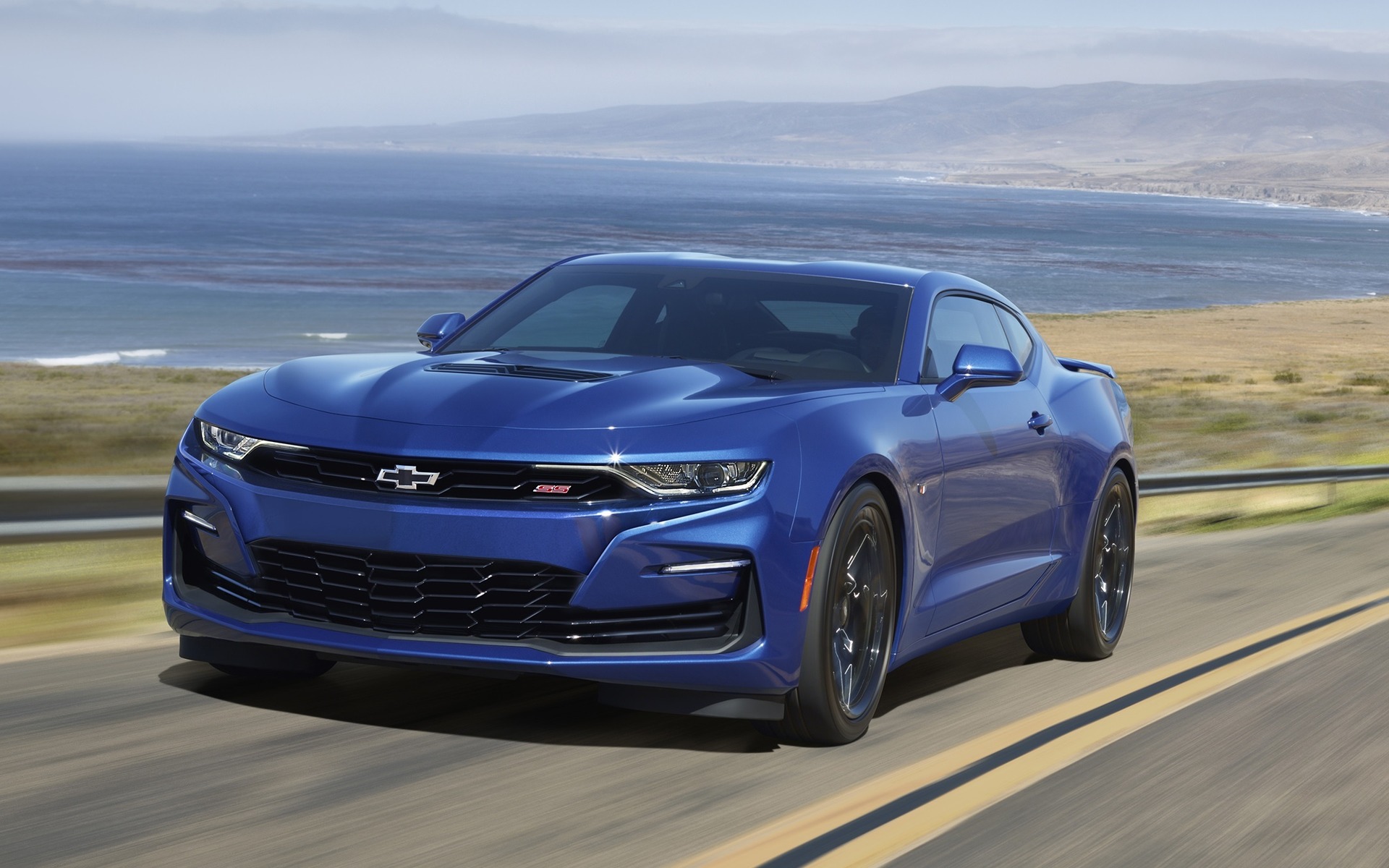
At the other end, the 2.0-liter direct-injected turbocharged 4-cylinder produces 275 horsepower, and the 3.6-liter direct-injected V6 generates 335 horsepower.
In 2020, the V6 can be paired with a 10-speed automatic transmission and includes Active Fuel Management.
The best news for fans of remote start is that all Camaro models equipped with an automatic transmission include remote start as a standard feature.
The Chevrolet Camaro, available as either a two-door coupe or convertible, has served as Chevy’s “affordable” sports car since its debut in 1967 as a direct challenger to the Ford Mustang.
Much like its rival, the Camaro’s character greatly depends on the selected engine and available options—ranging from a tame, comfortable cruiser to a ferocious machine built for the racetrack. Following a brief discontinuation in the early 2000s, the Camaro made a strong return in 2010, reintroducing itself with V-6 and V-8 engines.
For the 2020 model year, a number of updates were introduced. The LT1 spec was added, blending elements from the Camaro LT and SS trims. The SS model also received updated front-end styling. A new Rally Green exterior paint was introduced, along with fresh 20-inch wheel designs.
Interior and performance customization options expanded with the availability of red interior trim kits, red or orange-painted brake calipers, red seat belts, and a sueded microfiber-trimmed steering wheel and shift knob. Alloy sport pedals became an option, and the 3.6-liter V-6 gained the choice of a 10-speed automatic transmission. Recaro performance seats also became available for the LT trim.
Our impression of the Camaro remains positive. Since winning our Car of the Year award in 2016, the Camaro has continued to evolve, offering an increasingly diverse lineup from practical to extreme.
In a direct comparison test with the Dodge Challenger and Ford Mustang, the Camaro was described as “hands-down the best driver’s car of the group” and came out on top, despite criticism of its “cheap interior built from materials (seemingly) sourced from Happy Meal toys” and its notably poor outward visibility.
When the top comes down, however, the dynamic shifts. In a recent comparison between convertibles, the Camaro SS went head-to-head with the Mustang GT.
Our conclusion was that the Camaro convertible “is the better driver on our favorite back roads and at the track,” but the Mustang ultimately edged it out as the superior overall convertible.
When it comes to performance and fuel economy, the 2020 Camaro offers several engine options—all powering the rear wheels—paired with either a six-speed manual or an eight- or 10-speed automatic transmission. The base model features a 2.0-liter turbocharged inline-four engine producing 275 horsepower and 295 lb-ft of torque.
It achieves 20/30 mpg city/highway with the manual transmission and 22/31 with the eight-speed automatic. The 3.6-liter V-6 delivers 335 horsepower and 284 lb-ft, returning 16/26 mpg with the manual and 19/29 with the 10-speed automatic.
Moving up the performance ladder, the LT1 and SS models are powered by a naturally aspirated 6.2-liter V-8 that generates 455 horsepower and 455 lb-ft of torque.
Fuel economy for this setup is 16/24 mpg with the manual and 16/27 with the 10-speed automatic. At the top of the lineup is the ZL1 model, which features a supercharged 6.2-liter V-8 churning out 650 horsepower and 650 lb-ft. It delivers 14/20 mpg with the manual and 13/21 with the 10-speed automatic.
Active safety features available on the 2020 Camaro include a head-up display, rear park assist, rear cross-traffic alert, lane change alert with blind-spot monitoring, and forward collision alert.
In terms of utility, the 2020 Camaro provides 9.1 cubic feet of trunk space in coupe models, which also benefit from a 50/50 split-folding rear seat. The convertible version offers 7.1 cubic feet of cargo capacity. Inside the cabin, front passengers get 43.9 inches of legroom, while the rear seats offer 29.9 inches.
Technology features on the base 2020 Camaro 1LS include a 7.0-inch touchscreen infotainment system, six-speaker audio, Wi-Fi hotspot capability, Apple CarPlay and Android Auto connectivity, and two USB ports.
Higher trim levels offer an 8.0-inch touchscreen infotainment setup, with optional satellite navigation. A Bose premium audio system is also standard on upper trims—seven speakers in convertibles and nine in coupes.
All 2020 Camaros come with ten years of Chevrolet Connected Services. This suite includes vehicle diagnostics, a built-in marketplace accessible through the infotainment screen, the Smart Driver vehicle tracker, and a mobile app that offers access to service records and the owner’s manual.
The Camaro lineup consists of several trim levels, each offering a unique mix of performance and features. The base 1LS trim is only available as a coupe and comes with 18-inch aluminum wheels, keyless entry with pushbutton start, automatic climate control, a leather-wrapped steering wheel and shift knob, cloth seating, an eight-way power driver’s seat, and the base 7.0-inch infotainment system.
The 1LT trim, available as either coupe or convertible, adds a six-way power passenger seat and offers the optional 3.6-liter V-6 engine along with SiriusXM radio. Upgrading to the 2LT introduces dual-zone automatic climate control, heated and ventilated front seats, and leather-trimmed upholstery.
At the 3LT level, the Camaro gains features such as heated, auto-dimming side mirrors, an 8.0-inch infotainment screen paired with a nine-speaker audio system (or seven speakers for convertibles), a heated steering wheel, head-up display, illuminated sill plates, ambient interior lighting, and memory functions for the driver’s seat and mirrors.
The LT1 trim, while not as richly equipped as the 3LT, comes standard with the 6.2-liter V-8 engine. Additional features include the 7.0-inch touchscreen infotainment system, Wi-Fi hotspot, Apple CarPlay/Android Auto, Brembo front brakes, performance suspension, 20-inch wheels, cloth seats, and automatic climate control.
Building on the LT1, the 1SS trim adds more performance-oriented equipment including Brembo brakes on all four corners, a rear differential cooler, transmission oil cooler, tinted taillamps, a rear stanchion spoiler, and an upgraded 8.0-inch infotainment system with a six-speaker sound system.
The 2SS trim enhances the 1SS with premium features such as a nine-speaker Bose audio system (or seven speakers in convertible models), dual-zone automatic climate control, head-up display, a heated steering wheel, and heated and ventilated leather front seats.
Sitting at the top of the Camaro lineup is the ZL1. This ultimate performance variant includes the supercharged 6.2-liter V-8 engine, dual-mode exhaust system, electronic limited-slip differential, launch control, magnetic ride control dampers, track-tuned suspension, aluminum sport pedals, Recaro front bucket seats, a suede-wrapped steering wheel and shift knob, and a wireless charging pad.
2020 Ford Fusion
The 2020 Ford Fusion midsize sedan has managed to avoid discontinuation, even as Ford has phased out many of its car offerings in favor of crossovers, SUVs, and trucks.
The Fusion lineup is powered by a selection of engines: two EcoBoost turbocharged 4-cylinders, a naturally aspirated in-line 4-cylinder, and both hybrid and plug-in hybrid variants.
Trim levels span from the base S to SE, SEL, Titanium, and the hybrid counterparts Hybrid SE, Hybrid SEL, and Hybrid Titanium.

For those interested in remote start functionality, Ford has made its advanced FordPass Connect suite standard across all trims.
This technology enables drivers to start, lock, and unlock their car remotely.
For an added touch of convenience, users can even schedule specific times for the vehicle to start automatically meaning your car might be warming up before you even get out of bed.
Cars With Frustrating Key Fobs
It’s almost unbelievable to think that there was a time when cars didn’t have keys at all. It wasn’t until the 1910s that keys were introduced, initially as a basic security feature to help prevent unauthorized individuals from starting the engine.
Interestingly, before 1949, many cars relied on push-button starters. That changed when Chrysler introduced the ignition key, a new method that allowed drivers to start the engine by turning a key a system that eventually became the norm.
Now, decades later, we’ve come full circle with the return of push-button starting systems. More than 110 years on, car keys have evolved significantly.
Today’s keys often feature innovative designs and incorporate multiple functions that drivers can access even before stepping inside the vehicle.
Many modern cars have moved beyond traditional remotes altogether, integrating the car key into smartphone and smartwatch apps instead.
Over the years, we’ve encountered countless car key designs some undeniably impressive, others underwhelming, and a few that genuinely leave us puzzled.
Bugatti Veyron Key
When Volkswagen acquired Bugatti, it set out to transform the brand into a symbol of speed and engineering dominance by creating the fastest production car in the world.
At first, Top Gear wasn’t convinced. But eventually, Bugatti proved the skeptics wrong the Veyron did become the world’s fastest production car for a time, reaching a top speed of 253 mph.
With a quad-turbocharged W16 engine producing 1,000 horsepower, the Veyron was a technical marvel, and its price tag reflected its elite status.
Naturally, you’d expect such an extraordinary machine to come with an equally extraordinary key, right? Well, not exactly.
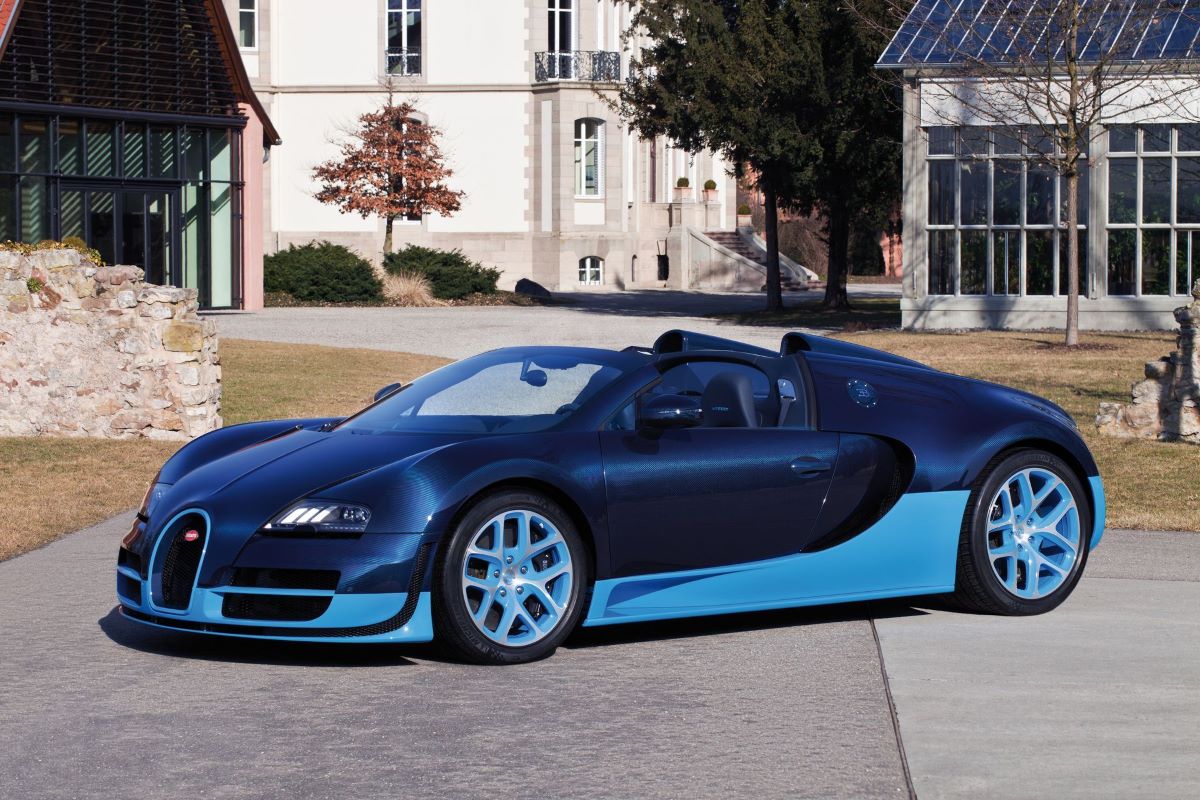
Despite the massive investment Volkswagen poured into the Veyron project, the key fob specifically the spare key was where the budget apparently hit a wall.
On early Veyron models, the spare key was identical to the ones used in early-2000s Volkswagen vehicles, including the Golf, Jetta, and even models from Skoda or Seat.
This peculiar detail has led many Volkswagen owners (myself included, as both a former and current VW driver) to joke that their key fobs belong to a Bugatti.
BMW Display Key
As we noted earlier, many modern vehicles have ditched physical key fobs in favor of digital alternatives integrated into smartphone or smartwatch apps.
But just a few years ago, this wasn’t yet the industry standard, and someone at BMW came up with an ambitious idea.
BMW introduced an optional large key fob with a built-in display screen that could provide various stats and controls for the vehicle.
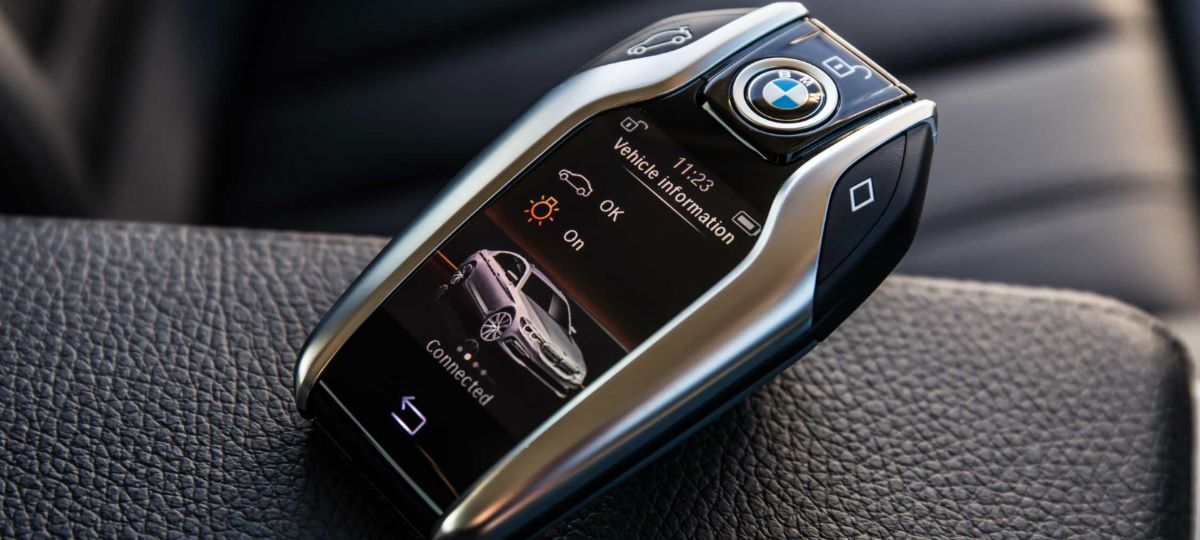
This feature was available on select models like the previous-generation 7 Series and the i8 sports car. While the concept might have sounded innovative, the reality fell short.
The key was bulky and unusually heavy, making it far more cumbersome than even the largest traditional key fobs.
The display was also notoriously laggy, and for many drivers, the added functionality simply didn’t justify the inconvenience. Eventually, BMW phased out the Display Key and returned to using standard fobs.
The BMW Display Key with a fully featured touchscreen, compared to the remote services app, serves different purposes in my daily use—each useful in its own, non-redundant way. Starting with the question of whether it’s just a fancy gimmick or genuinely useful: yes, it’s fancy, at least in my opinion.
The design is sleek and always draws attention from friends, colleagues, or even strangers when it happens to be lying on a desk or a restaurant table. While that may not be the most essential feature, I truly find it to be a stylish, high-end option that adds to the overall BMW experience.
Functionality-wise, the key provides significantly faster access to vehicle status and preconditioning features than the smartphone app.
Although most of these functions are available on the app, on my iPhone it typically takes 7 to 10 seconds to check if the doors are closed or to start the air conditioning—this includes unlocking the phone with Face ID, opening the app, waiting for it to load, and then navigating to the correct option.
With the Display Key, it’s a matter of one swipe and one tap, taking only 2 to 3 seconds total. This kind of responsiveness is extremely helpful when I’m rushing to get to work or an appointment.
Another major advantage is the ability to remotely adjust the vehicle’s height—a function only available via the Display Key.
I often have my kids or parents with me, and I prefer to lower the car’s suspension, start the air conditioning, and unlock the vehicle so they can get in comfortably while I’m still getting ready. With the Display Key, this entire process takes just 2 to 4 seconds.
The app, on the other hand, doesn’t even offer remote height adjustment, and even if it did, performing all three actions sequentially would take at least 40 seconds due to the delay between signals. That level of delay makes the app impractical for this use case, even if it eventually adds the suspension function.
Mini Key Fob
This criticism doesn’t apply to the latest generation of Mini’s beloved hatchback, as the brand finally made the sensible decision to switch to a more conventional pill-shaped key fob.
However, the path from a standard key to this improved version included an unfortunate detour: the infamous circular key fob.
Nearly every Mini model from the R56 hatch to the previous-generation Countryman used some variation of this design.
Shaped like a frisbee, it even featured an awkward extension at the bottom just to accommodate a keychain.
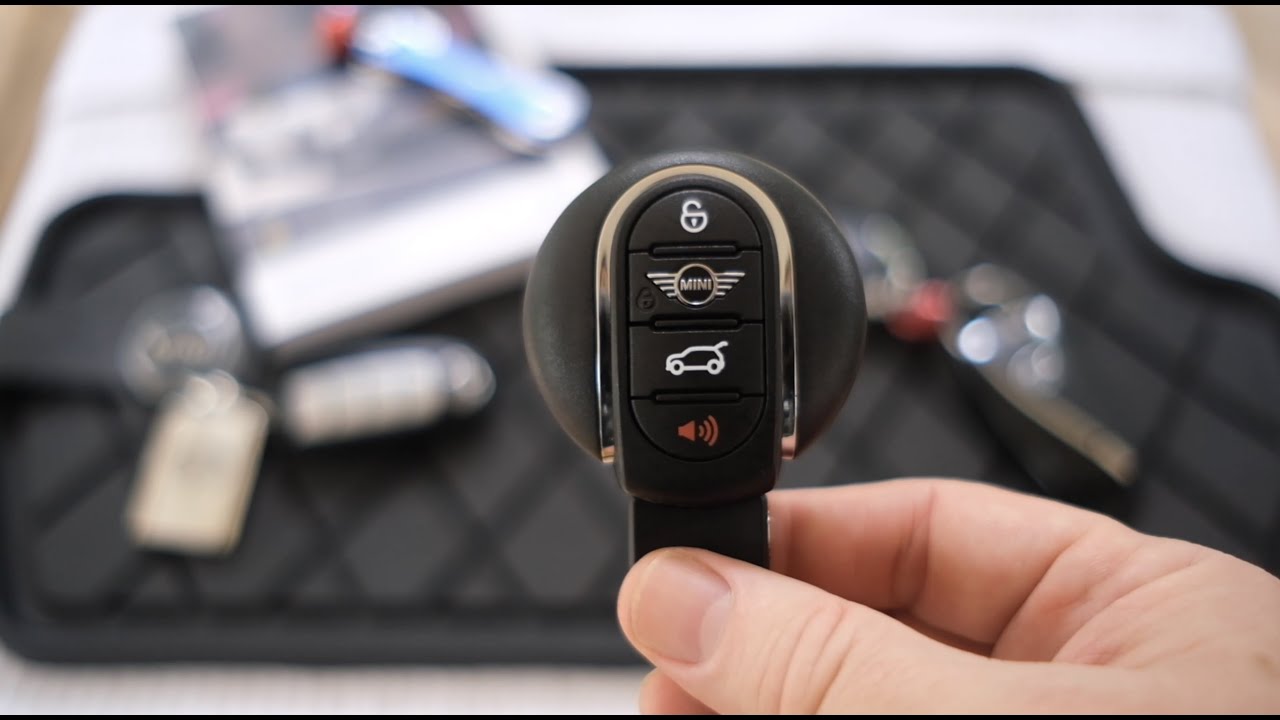
While it’s tempting to overlook this misstep due to the Mini’s undeniable charm, a closer look reveals this was simply a poor design choice.
Later iterations of this fob improved things slightly by relocating the buttons into a more intuitive vertical row on the back.
But the earliest versions placed the buttons awkwardly around the edge of the disc. To make matters worse, as I can personally attest, the labels on these buttons wear off over time.
We adore the Mini and its quirky aesthetic, but we’re genuinely relieved that this particular key fob is now a thing of the past.
Smartphone / Digital Keys
Let’s be honest here: smartphone or digital car keys aren’t all they’re cracked up to be.
Introduced with the Tesla Model 3 a few years ago, the concept seemed like a clever way to solve a real issue what if you forget your key fob?
Since people almost always carry their phones, why not roll key functions and a host of other features into a smartphone app?
In Tesla’s case, you can do things like honk the horn, flash the lights, activate Sentry Mode, and more.
If you want to share access with someone else, you either hand over a physical key as with the Ford Mustang Mach-E or provide a sleek key card, like those used in the Volvo EX30 and Tesla Model 3.

All of that sounds great in theory. But what if your phone dies?
Although the unlocking and starting functions typically operate over Bluetooth and don’t require a data connection, the process of using remote commands through the app is anything but seamless.
You have to retrieve your phone, unlock it, launch the app, wait for it to load, navigate to the specific feature, and finally tap it compared to simply pulling a key fob from your pocket or using passive keyless entry.
At the end of the day, was there really a problem with just using a traditional key to unlock the car?
Or better yet, walking up to a keyless-entry car and opening the door effortlessly? Car apps definitely have their place, but turning your phone into the sole key is a step too far.
5. Nissan Altima (Older Models)
Before recent upgrades, many Altima models had key fobs that were known for weak range and laggy response. Users frequently had to press the buttons multiple times to lock or unlock the car. Some even reported that the fob failed to work reliably in cold weather, making winter mornings more frustrating than they needed to be.
The Nissan Altima perfectly fits the definition of a “bread-and-butter model.” It’s long been a go-to choice for millions of U.S. drivers seeking affordable, fuel-efficient, reliable, and comfortable transportation. It meets all those needs with ease. The standard 188-hp engine offers adequate performance and returns up to 39 mpg on the highway.
For buyers wanting more power, a turbocharged, variable-compression four-cylinder engine is available, delivering 248 horsepower on premium fuel and achieving 34 mpg highway. All-wheel drive is an option as well. Inside, the Altima offers a spacious cabin, supportive seating, an intuitive infotainment screen, ample cargo room, and a solid set of standard safety features.
However, it lacks the driving excitement some competitors provide. Every Altima uses a continuously variable automatic transmission (CVT), which favors fuel economy at the cost of engaging performance. Still, the latest Altima wears sharp styling and optional flashy wheels that help boost its curb appeal despite its more utilitarian nature.
For 2024, the Altima sees a minor update. After receiving a light refresh in 2023, this year brings a small digital upgrade: NissanConnect Services, which enables remote locking, engine starting, and emergency calling, now comes with a three-year trial instead of six months. However, there’s speculation that the Altima and its smaller sibling, the Versa, might be phased out within the next few years.
Among these, the SR trim stands out. It adds a bit of fun to the mix with a sportier suspension and 19-inch wheels that sharpen handling. Notably, the same wheel and tire setup on a 2019 Altima SL—without the stiffer suspension—delivered better cornering grip than a BMW 330i xDrive.
The SR also adds upgraded comfort and technology features such as an eight-way power-adjustable driver’s seat, wireless Apple CarPlay, wired Android Auto, a refined digital gauge cluster, and a leather-wrapped steering wheel.
Adding the $2,890 Premium Package brings even more, including a moonroof, heated leather seats, WiFi hotspot capability, and a larger 12.3-inch infotainment screen. All-wheel drive is available for $1,500 on three of the five trims, including the SR. However, it’s not offered on the base S or the top-tier SR VC-Turbo.
Under the hood, most Altimas come with a 2.5-liter four-cylinder engine making 188 horsepower and 180 lb-ft of torque. The range-topping SR VC-Turbo gets a turbocharged 2.0-liter four-cylinder producing 248 horsepower on premium gas.
Every model uses a CVT, which limits the usefulness of paddle shifters on higher trims and dulls spirited driving. Still, for everyday needs, the Altima performs well. Its steering is precise for a mid-size sedan, braking is smooth, and the suspension handles rough roads well—especially on the smaller wheels.
The 2.5-liter engine can get loud under stress and doesn’t deliver more than average acceleration. The VC-Turbo, on the other hand, brings meaningful power gains, making the Altima noticeably quicker.
Still, even with this engine and the sport-tuned suspension, it lacks the dynamic edge of competitors like the Honda Accord. And while the 19-inch wheels improve grip on curves, they also compromise ride comfort.
In performance testing, an Altima equipped with the 2.5-liter engine and all-wheel drive accelerated from 0 to 60 mph in 7.6 seconds. The turbocharged 2.0-liter model with front-wheel drive managed the same sprint in just 5.9 seconds, showing the significant performance difference the VC-Turbo provides.
Fuel economy remains a strong suit. Without using hybrid tech, the Altima still delivers excellent EPA ratings. The base 2.5-liter engine gets up to 27 mpg city and 39 highway in front-wheel drive S and SV trims. All-wheel-drive versions achieve slightly lower figures at 26 city and 36 highway.
The turbocharged 2.0-liter engine is rated at 25 mpg city and 34 highway. In real-world highway testing, the all-wheel-drive Altima reached 35 mpg, while the VC-Turbo managed a strong 37 mpg.
Inside, the Altima’s cabin avoids major missteps. Its weakest moments come when it tries too hard to look sporty. The flat-bottomed steering wheel and faux carbon fiber trim in the SV model, for example, seem out of place in a car with moderate power, no paddle shifters, and no drive modes. Aggressive lumbar support may also be polarizing. However, the overall cabin experience is positive.
The layout is simple and intuitive, and the controls are user-friendly. Material quality is solid across the range, steering clear of the hard plastics that undermine some competitors—even those in luxury segments. Up front, storage is functional with deep door pockets and a center console tray. Rear seat passengers enjoy generous legroom.
One drawback is the rear seats, which don’t fold completely flat and must be released from the trunk, adding a layer of inconvenience. Still, the trunk holds six carry-on bags, and 17 bags fit with the rear seats folded. This cargo capacity matches the Toyota Camry’s but falls two bags short of the Honda Accord.
The infotainment system is straightforward. An 8.0-inch touchscreen comes standard with Apple CarPlay and Android Auto. While the main menu can be customized, other personalization options are limited.
Physical knobs make volume and tuning easy to manage, but the screen can be slow to respond. Higher trims like the SL and SR feature a larger 12.3-inch touchscreen with navigation, wireless phone charging, and built-in WiFi hotspot capability. This larger display is also optional on the SV trim.

